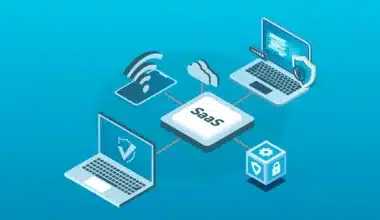What Is Assistive Technology?
Assistive technology (AT) is any tool, piece of machinery, piece of software, or product system used to enhance, preserve, or enhance a person with a disability’s functional capabilities.
Furthermore, people who struggle with speaking, typing, writing, remembering, pointing, seeing, hearing, learning, walking, and many other tasks can benefit from it. Different assistive technologies are needed for various disabilities.
Note that:
- It includes all systems and services connected to the provision of assistive goods and services are included.
- An individual’s functioning and independence are maintained or enhanced by assistive products, which benefit their well-being.
- Examples of assistive products include hearing aids, wheelchairs, communication aids, spectacles, prostheses, pill organizers, and memory aids.
- More than 3 billion individuals will require at least one assistive product by 2050 due to an aging global population and an increase in noncommunicable diseases, with many older people requiring two or more.
Types of Assistive Technology
#1. Assistive Technology In Education
Access to it in education is crucial for students with disabilities, as it helps them learn without barriers. The Individuals with Disabilities Education Act (IDEA) mandates individualized education programs for these students, which require evaluations and approval.
Therefore, educational institutions must ensure children with disabilities have access to Free Appropriate Public Education (FAPE) in the Least Restrictive Environment (LRE), ensuring they remain in the same classes and activities.
Additionally, assistive technologies play a vital role in providing necessary services, including transportation and developmental and psychological support.
#2. Assistive Technology In Computers
Digital accessibility is the term for assistive computer technology that enables independent and autonomous web browsing for individuals who have disabilities. Additionally, this idea also encompasses high-tech solutions like specialized computers and different software and hardware gadgets like screen readers, augmented keyboards, and virtual translators for sign language. Note that the goal of these technologies is to make the digital world more open and accessible to all users.
The health and well-being of elderly people and people with disabilities are significantly impacted by it, which also has unexpected socioeconomic benefits. It lessens the requirement for long-term care systems by allowing old folks to live at home without assistance.
Additionally, government spending on healthcare can be reduced by investing in assistive technologies because they improve educational and employment opportunities and lower the risk of contractures and pressure sores.
However, healthcare policies frequently do not cover assistive technology, forcing people with disabilities and their loved ones to make significant financial investments. Note that more professionals with the necessary skills are also required to assist this population.
Benefits of Assistive Technology
By enabling them to engage in activities without the assistance of family members or paid assistants, the development of assistive technology has significantly improved the quality of life for people with disabilities. However, there hasn’t been much research done on how satisfaction, self-worth, adaptability, safety, and competence have changed.
Additionally, two scales—the Psychosocial Impact of Assistive Devices Scale (PIADS) and the Quebec User Evaluation of Satisfaction with Assistive Technology (QUEST)—have been developed to objectively assess the advantages.
Furthermore, QUEST and PIADS both measure user perception and psychological aspects connected to assistive technology devices, while QUEST uses variables like environment, attitudes, expectations, and perceptions. These resources offer trustworthy consumer viewpoints and are frequently used in conjunction with functional status evaluations.
What Kind of Assistive Technology Tools Are Available?
These are some examples of assistive technologies:
- Mobility aids, such as crutches, wheelchairs, scooters, walkers, canes, and orthotic devices.
- Hearing aids are devices that improve a person’s hearing.
- Cognitive aids, such as computers or electrical assistive devices, can be used to help people who struggle with memory, attention, or other cognitive difficulties.
- People with mobility and sensory impairments can use computers and mobile devices with the aid of computer software and hardware like screen readers, voice recognition software, and screen enlargement tools.
- Adapted pencil grips, book holders, and automatic page-turners are a few tools that can be used to assist students with disabilities in participating in educational activities.
- People with hearing impairments can watch movies, TV shows, and other digital content with closed captioning.
- Ramps, grab bars, and wider doorways are examples of physical alterations made to the built environment to improve accessibility to buildings, establishments, and workplaces.
- People with limited motor skills can eat, play games, and perform other tasks thanks to adaptive switches and utensils.
- Devices and features of devices like specialized handles and grips that extend reach and lights on phones and doorbells
Who Pays For Assistive Technology?
The technology, use, and user all influence the answer. Perhaps for a few extremely expensive items, you may pay little to nothing for many types of AT. Some instances:
- Technology that is mentioned in an IEP as well as general special education instructional materials are both covered by school systems.
- Some of it is covered by government programs (such as Social Security, veteran’s benefits, or state Medicaid programs) if a doctor recommends it as an essential medical device.
- If a doctor recommends it as a necessary medical or therapeutic device, private health insurance will cover the cost.
- Whether funded by public or private organizations, rehabilitation, and job training programs may cover the costs.
- If it is a reasonable request to allow an employee to perform necessary job tasks and may be paid for by employers.
What Is the Most Used Assistive Technology?
Text-to-speech software, Braille, magnifying glasses, screen readers, and materials with large print are the most popular forms of assistive technology.
What Are Level 1 and Level 2 Assistive Technologies?
Under the NDIS, there are four categories of complexity for assistive technology:
#1. Level 1 (Basic):
This is low-cost and low-risk, and participants will find and source it mainly on their own. Examples include doorbells, large print labels, and non-slip bath mats.
#2. Level 2 (standard):
Typically, participants can carry out tests and trials before making a final decision. Examples include ramps, handrails, and bath seats.
#3. Level 3 (specialized):
Comparable to Level 2, but frequently needs to be modified to meet the participant’s needs. Examples include desktop electronic magnification, home improvements like pressure mattresses and bathroom adaptations, etc.
#4. Level 4 (complex):
These are typically “off the shelf” or custom-made, but they are set up specifically for the person. Examples include speech processors for cochlear implants, intricate home renovations requiring significant structural change, etc.
What Are the 3 Levels of Assistive Technology?
Based on the level of assistance it offers to people with disabilities, assistive technology can be divided into three levels. They are as follows:
#1. Low-Tech Assistive Technology:
This describes straightforward, non-electric tools or equipment that are affordable and simple to use. Additionally, it includes items like raised-line paper, pencil grips, magnifying glasses, and non-slip mats. Note that these gadgets are simple to obtain or make and don’t require any specialized training or expertise to use.
#2. Mid-Tech Assistive Technology:
More complex than low-tech assistive technology but without electricity or batteries, this is referred to as mid-tech equipment. Additionally, it includes things like audiobooks, communication boards, and modified scissors. To use these tools effectively, you typically need some training or instruction.
#3. High-Tech Assistive Technology:
Electronic or computer-based devices that run on electricity or batteries are referred to as high-tech assistive technology. Additionally, screen readers, eye-tracking devices, and speech recognition software are a few examples. To function effectively, they are frequently more expensive and require specialized training or assistance.
Note that the amount of assistive technology a person with a disability uses ultimately depends on their unique needs and capabilities. While some people might only need low-tech aids, others might find that high-tech aids improve their freedom and standard of living.
What Is Not Considered Assistive Technology?
A lot of tools can be categorized as assistive technology devices, except those that require surgery to implant and are not included in the IDEA definition.
IDEA defines Assistive Technology as any item, piece of equipment, or product system that is used to increase, maintain, or improve the functional capabilities of individuals with disabilities.
What Is Modern Assistive Technology?
Modern assistive technology is the most cutting-edge equipment available for helping people with disabilities carry out specific tasks, gain more independence, and enhance their quality of life. Furthermore, these technologies use the most recent developments in electronics, computing, and robotics to give people with disabilities more practical and effective solutions.
Examples of modern assistive technology include:
#1. Wearable technology:
Smartwatches and fitness trackers are examples of wearable technology that can be used to track physical activity, monitor vital signs, and send alerts and reminders for appointments and medication.
#2. Exoskeletons:
Wearable exoskeletons help people with mobility issues stand up, walk, and carry out other tasks that would otherwise be challenging or impossible.
#3. BCIs (brain-computer interfaces):
BCIs are tools that let people with motor disabilities use their thoughts to operate equipment like computers and wheelchairs.
#4. Autonomous vehicles:
With greater independence and mobility, autonomous vehicles have the potential to reform transportation for people with disabilities.
#5. Smart home technology:
With the aid of voice commands or mobile devices, smart home technology enables people with physical limitations to make changes to their environment, such as lighting, doors, and temperature, using voice commands.
#6. Robot assistants:
Numerous tasks, including assisting with mobility support, household chores, and personal care, can be carried out by robot assistants.
Note that modern assistive technology offers promising solutions for individuals with disabilities, as it advances rapidly and offers innovative solutions.
What Is the Difference Between Assistive Devices and Assistive Technology?
As the name implies, assistive technology refers to a wide range of technological tools, including mainstream technologies, that help people with disabilities carry out their daily activities. Meanwhile, assistive devices are a subset of assistive technology that improves any services provided to people with disabilities.
Assistive Technology Devices for Disabilities
Examples include:
- Display readers
- A hearing aid
- Orcam Inc.
- Computer magnifier
- Switch
- Dynamic braille display
- Prosthesis
- Voice-generating apparatus
- Implantable cochlea
What is an Assistive Technology Professional Certificate?
The ATP certification, which has been NCCA-accredited since 2010, shows proficiency in assessing customer needs, choosing suitable assistive technology, and offering training. It demonstrates the abilities and knowledge necessary for AT professionals, employers, and the AT community and has been accredited by the National Commission for Certifying Agencies.
How Digital Health Technology is Transforming Healthcare
RADIOLOGY TECHNOLOGIST: Definition, Job Description, Salary, & Program
SURGICAL TECHNOLOGIST SALARY: How Much Does a Surgical Tech Make in 2023?






